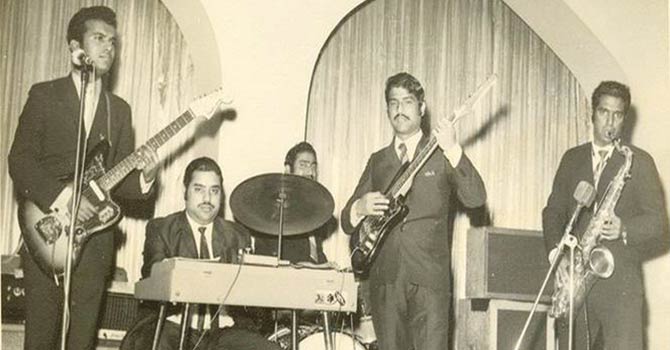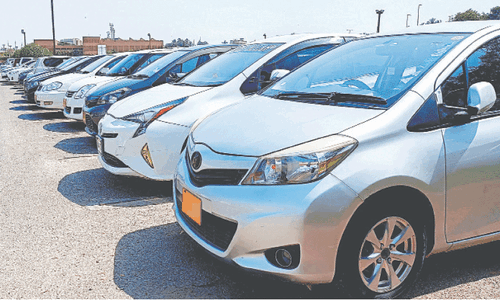Moniza Inam relates how the Goan community brought a unique touch of exuberance and vivacity to the Karachi of the 1960s
The lively strains of a popular jazz number filtered into the streets of Saddar and passers-by would stop for a moment to hum the tune and smile as they went on their way while a band of jovial merry-makers danced the night away in the grand hall of the Karachi Goan Association. This was the Karachi of the 60s — a cheerful, vibrant city, that owed much of its joie de vivre to its Goan Community.
Goa, the coastal city distinguished for its breathtaking scenery, picturesque beaches and lush coconut groves, is familiar to us through Bollywood which has long capitalised on its natural beauty and vivacious culture.
Located on the west coast of India, the state is the smallest in India in terms of size. Surrounded by land on three sides and the Arabian Sea on its west, the Goan state enjoyed an important geo-strategic position throughout history, which turned it into an epicentre for maritime trade, a hybrid cultural centre, and the platform for diffusion of colonialism in the subcontinent. In 1510, it was captured by the Portuguese, which paved the way for an idiosyncratic blend of Indo-Hindu and Luso-Christian culture.
In the 18th century, the Goans started to move out of their state to avail greater economic opportunities in British India, and the quest took them to Bombay (Mumbai), Karachi, Africa and other destinations. The port city of Sindh was among their favourite destinations as the British decided to develop the metropolis as a future hub of trade and commerce. When Charles Napier conquered Sindh, a large number of Goans began to migrate to Karachi.
This marked the beginning of a long drawn journey in which the community established itself in the city and took active part in its development with its hard work and diligence, specifically in the areas of education, healthcare, community service and sports. The Goan community also brought a unique touch of exuberance and vivacity to their adopted city through their rich cultural traditions in music, drama, theatre and dance.
Mary Dias, an 83-year-old Goan who moved to Karachi with her parents before the Partition, states that “we are hardcore Karachittes; we came here while the city was still evolving and made valuable contributions to make it a vibrant and culturally aesthetic metropolis as well as an economically viable city. Many of the people who chose to live here had Portuguese passports, which they surrendered to become Pakistani citizens.”
According to Ronald deSouza, a principal electrical consultant and a human and civil rights activist, at the time of the Partition the aggregate population of Karachi was almost 400,000 of which the Goan community numbered around 12,000 to 15,000, about three to four per cent of the total population.
The 1960s were quite a revolutionary period as the generation of ‘baby boomers’ was coming of age and new ideas were being generated in every walk of life and on the global level there was an atmosphere of bonhomie and camaraderie. This spirit and culture also made its way into Pakistan, especially in the Goan community where the ’60s are considered the golden period.
The Rhythm Quintet comprising the Soares brothers performing at the Intercontinental. - Photo by KGAMenin Rodrigues, CEO of a communication and marketing firm, explains that the Goans are by nature laid-back people who like to relax, enjoy themselves and avoid social pressures and controversies. Luckily, at that time there were more opportunities to enjoy life. “The Karachi Goan Association (KGA) club, which is now 125 years old, gave its members umpteen opportunities for recreational activities such as dance, music, theatre, opera, etc. The several rooms were always full of people engaged in playing bridge, tombola, whist-drive as well as table tennis or merely reading quietly; the in-house bar was another popular attraction. For outdoor games, there was the KGA Gymkhana on M.A. Jinnah Road with its large sports ground for cricket, hockey, football as well as tennis and badminton courts,” adds Rodrigues. No wonder the people from the community excelled in these sports.
“Goans have a natural disposition towards music and dance and many families owned a piano or a baby piano and from a young age, children found themselves indulging in music. There were many talented musicians and singers in the community that formed Karachi’s first westernised music bands who performed to live audiences at consulates, embassies, night clubs, hotels and discotheques, New Year and Christmas parties and charity balls. The first all-women band was formed by the Goan girls known as ‘Xavier Sisters’ and they were immensely popular for their live performances.”
Talking about the party scene during the period, Dias’ eyes sparkle with joy and excitement as she relates how it was always party season, especially around Christmas and Easter, and parties meant music and dance. “I was the best dancer of my time and always the last one to leave the floor,” she recalls, nostalgically
There were also very successful actors and playwrights who produced quality theatre throughout the 1950s, ’60s and ’70s which were presented at the KGA, St. Patrick’s and St. Joseph’s, Adamjee auditorium, Ibrahim Alibhai auditorium, the Goan Union and the Loco (where Shapes stands today) and so forth. There were also theatre plays in Konkoni language in the Katrak Hall in Saddar. Goan teachers were also a great influence in the lives of young men and women of that time.
No account of the community would be completed without mentioning Goan food which is very spicy, pungent and delicious. Among many dishes, fish curry, white rice and fried fish (bangra with red-masala) is a popular delicacy. Around Christmas, Sorpotel, a spicy vinegary meat stew of Portuguese origin is served with Sanas. The traditional desserts are marzipan, Bebinca, Kulkuls, Wohrahs, swales, Carrabolla, cheese-bows and almond, walnut, coconut, pistachio and cashew nut toffees among others. The Pereira’s Restaurant & Bakery, Misquita and Lawrence bakery were popular places in the 1960s but are sadly no more; some bakeries, however, still sell Goan delicacies.
A very interesting religious event which deSouza mentioned was the procession taken out from St Patrick’s Cathedral in Saddar known as Christ the King Procession in which the members of the Goan community and other Catholics took part. It was nearly quarter of a mile long. However, it was stopped in the mid-’60s due to congestion on the streets and some reported cases of harassment.
Both deSouza and Rodrigues have given an interesting account of their childhood and the common denominator is the memory of a time blessed by feelings of benevolence and congeniality. Rodrigues mentions that he spent his childhood in Saddar in a mixed population and people spoke different languages like Gujrati, Urdu, Sindhi, Punjabi, Pushto and Konkoni. “Such was the beauty of our bonding that all of us could understand, appreciate and converse in each other’s language,” he adds.
The KGA produced some of the most popular and enchanting musicals in the 1960s and 1970s. - Photo by KGAThe overall atmosphere of the city was very tolerant and accommodating in which all ethnic and religious communities coexisted amicably. However, like all good things in life this also ended in the 1970s. The real change for the community came after the Prohibition Act in 1976 after which many of their congregations and parties were spoiled by overzealous moral custodians. Strain and tension set in as the openness and pluralism which made the city congenial started to fade away and so there started mass migration to the UK, the US, Canada and Australia. As deSouza mentions, it is always the best brains that leave in the case of mass exodus and it happened here too.
Countries who value tolerance and diversity are among the most successful and developed in the world. Pakistanis who strive for democracy, poverty alleviation and rule of law should remember that democracy isn’t just about the will of the majority but is also intrinsically tied to the rights of the minorities. Our people and policymakers should build their legal infrastructure and cultural values along the lines of pluralism and the virtues of tolerance and diversity. A society which penalises people for being different is not one which the father of our nation envisioned or fought for. Before intellectual perversion sweeps us away like a storm, we need to give the Goan community, and everyone else, some much needed breathing space.



































